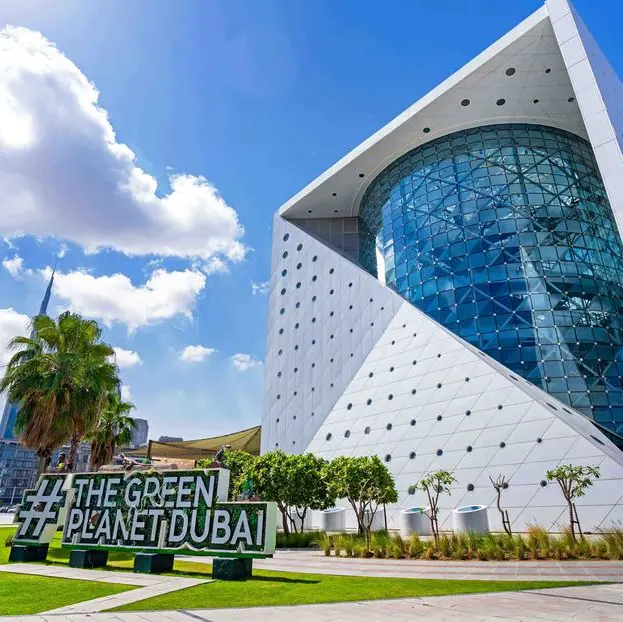Abu Dhabi: The decade-long trend of strong growth in renewable energy capacity continued in 2018 with global additions of 171 gigawatts (GW), according to new data released by the International Renewable Energy Agency (IRENA) today. The annual increase of 7.9 per cent was bolstered by new additions from solar and wind energy, which accounted for 84 per cent of the growth. A third of global power capacity is now based on renewable energy.
IRENA’s annual Renewable Capacity Statistics 2019, the most comprehensive, up-to-date and accessible figures on renewable energy capacity indicates growth in all regions of the world, although at varying speeds. While Asia accounted for 61 per cent of total new renewable energy installations and grew installed renewables capacity by 11.4 per cent, growth was fastest in Oceania that witnessed a 17.7 per cent rise in 2018. Africa’s 8.4 per cent growth put it in third place just behind Asia. Nearly two-thirds of all new power generation capacity added in 2018 was from renewables, led by emerging and developing economies.
“Through its compelling business case, renewable energy has established itself as the technology of choice for new power generation capacity,” said IRENA Director-General Adnan Z. Amin. “The strong growth in 2018 continues the remarkable trend of the last five years, which reflects an ongoing shift towards renewable power as the driver of global energy transformation.
“Renewable energy deployment needs to grow even faster, however, to ensure that we can achieve the global climate objectives and Sustainable Development Goals,” continued Mr. Amin. “Countries taking full advantage of their renewables potential will benefit from a host of socioeconomic benefits in addition to decarbonising their economies.”
IRENA’s analysis also compared the growth in generation capacity of renewables versus non-renewable energy, mainly fossil-fuels and nuclear. While non-renewable generation capacity has decreased in Europe, North America and Oceania by about 85 GW since 2010, it has increased in both Asia and the Middle East over the same period. Since 2000, non-renewable generation capacity has expanded by about 115 GW per year (on average), with no discernible trend upwards or downwards.
Highlights by technology:
- Hydropower: Growth in hydro continued to slow in 2018, with only China adding a significant amount of new capacity in 2018 (+8.5 GW).
- Wind energy: Global wind energy capacity increased by 49 GW in 2017. China and the USA continued to account for the greatest share of wind energy expansion, with increases of 20 GW and 7 GW respectively. Other countries expanding by more than 1 GW were: Brazil; France; Germany; India; and the UK
- Bioenergy: Three countries accounted for over half of the relatively low level of bioenergy capacity expansion in 2018. China increased capacity by 2 GW and India by 700 MW. Capacity also increased in the UK by 900 MW
- Solar energy: Solar energy capacity increased by 94 GW last year (+ 24 per cent). Asia continued to dominate global growth with a 64 GW increase (about 70% of the global expansion in 2018). Maintaining the trend from last year, China, India, Japan and Republic of Korea accounted for most of this. Other major increases were in the USA (+8.4 GW), Australia (+3.8 GW) and Germany (+3.6 GW). Other countries with significant expansions in 2018 included: Brazil; Egypt; Pakistan; Mexico, Turkey and the Netherlands.
- Geothermal energy: Geothermal energy increased by 539 MW in 2018, with most of the expansion taking place in Turkey (+219 MW) and Indonesia (+137 MW), followed by the USA, Mexico and New Zealand.
Globally, total renewable energy generation capacity reached 2,351 GW at the end of last year – around a third of total installed electricity capacity. Hydropower accounts for the largest share with an installed capacity of 1 172 GW – around half of the total. Wind and solar energy account for most of the remainder with capacities of 564 GW and 480 GW respectively. Other renewables included 121 GW of bioenergy, 13 GW of geothermal energy and 500 MW of marine energy (tide, wave and ocean energy).
The full report is available here. Highlights of key findings can be found here.
-Ends-
About the International Renewable Energy Agency (IRENA)
The International Renewable Energy Agency (IRENA) is the global intergovernmental organisation that supports countries in their transition to a sustainable energy future, and serves as the principal platform for international co-operation, a centre of excellence, and a repository of policy, technology, resource and financial knowledge on renewable energy. With 160 Members (159 States and the European Union) and 23 additional countries in the accession process and actively engaged, IRENA promotes the widespread adoption and sustainable use of all forms of renewable energy, including bioenergy, geothermal, hydropower, ocean, solar and wind energy, in the pursuit of sustainable development, energy access, energy security and low-carbon economic growth and prosperity.
Contact information:
Damian Brandy, Communications Officer, IRENA,
dbrandy@irena.org;
+971 2 417 9016
Stay in touch with IRENA at www.twitter.com/irena and www.facebook.com/irena.org
© Press Release 2019Disclaimer: The contents of this press release was provided from an external third party provider. This website is not responsible for, and does not control, such external content. This content is provided on an “as is” and “as available” basis and has not been edited in any way. Neither this website nor our affiliates guarantee the accuracy of or endorse the views or opinions expressed in this press release.
The press release is provided for informational purposes only. The content does not provide tax, legal or investment advice or opinion regarding the suitability, value or profitability of any particular security, portfolio or investment strategy. Neither this website nor our affiliates shall be liable for any errors or inaccuracies in the content, or for any actions taken by you in reliance thereon. You expressly agree that your use of the information within this article is at your sole risk.
To the fullest extent permitted by applicable law, this website, its parent company, its subsidiaries, its affiliates and the respective shareholders, directors, officers, employees, agents, advertisers, content providers and licensors will not be liable (jointly or severally) to you for any direct, indirect, consequential, special, incidental, punitive or exemplary damages, including without limitation, lost profits, lost savings and lost revenues, whether in negligence, tort, contract or any other theory of liability, even if the parties have been advised of the possibility or could have foreseen any such damages.









